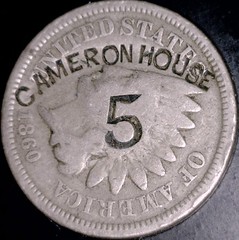
PREV ARTICLE
NEXT ARTICLE
FULL ISSUE
PREV FULL ISSUE
NOTES FROM E-SYLUM READERS: DECEMBER 16, 2018On Richard Margolis I read with profound sorrow of the passing of Richard Margolis. I knew him reasonably well, going back to my years with Coin World and the lamented World Coins Magazine. I admired the rigor with which he policed the early New York International shows, defying dealers who attempted to display U.S. coins in that pioneer all-world show. Here's one I dare anyone else to match: my bride Pat (nee LaBranche) and I had our honeymoon at the New York International show in December 1977 at the Americana Hotel! We had a luxurious room on the 32nd floor, to which we had rushed back for a quick change, my bride going ahead to the charter bus carrying invitees to a special showing of the Royal Mint's new facility in New Jersey, created by ex-Amos Press functionary John Van Emden. I followed just AFTER all the elevators failed! I rushed down 32 stories on foot and found there was a bar aboard! Next day was somewhat painful... The International was never the same in the ghastly environment of the Waldorf. Bill Rosenblum forwarded this CoinsWeekly article about Margolis. Thanks. -Editor To read the complete article, see: To read the earlier E-Sylum articles, see: World Coin Comments 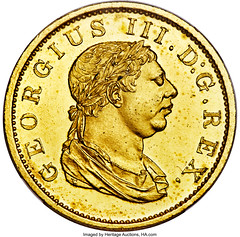 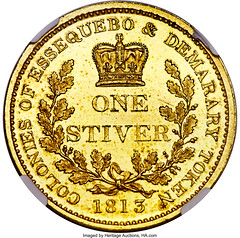 Regarding lots in the upcoming January 2018 NYINC Heritage World Coins sale, Chip Howell writes: I'd never heard of "Essequibo & Demerary" either until earlier this year, when I stumbled onto an old ha'penny from there (alas w/a hole in it) at a coin show in Timonium, MD. As you may know now, this was incorporated into British Guiana => Guyana. I was familiar with "Demerara Sugar" which is what brown sugar is called in the UK, named for the Guyanan region. BTW, that rhinoceros on the Gabon token looks a lot like an Asian rhino (i.e., the skin-folding "plate armor" look), but it does have the proper two horns of an African rhino, at least--like the engraver was looking at a composite drawing of a generic rhino, rather than sketching from life, which wouldn't be all that surprising, I suppose. 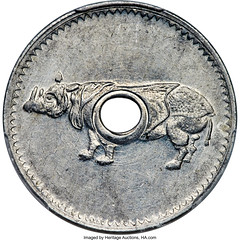 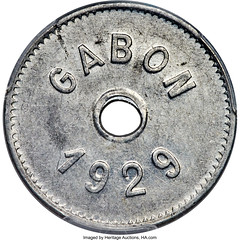 I'm not familiar with "Demerara Sugar". Interesting connection. And yeah, that rhino looks a bit odd. Thanks. -Editor To read the earlier E-Sylum article, see: Query: William A. Pettit I just purchased a bound set of Whitman Numismatic Journals 1964 - 1968. Looks like they were bound for William A. Pettit. I gather he was pretty well known in the numismatic field, but I can't really find out much about him on Google. Any chance you or some of your E-Sylum subscribers can pass on any more info. about the gentleman? Google's fine, but a Newman Numismatic Portal search is more narrowly targeted on numismatic sources. An NNP search found 142 hits. Many of these are just mentions of his name as a club officer or meeting attendee, but the July 1995 issue of The Numismatist has an obituary of him on p111. That content is restricted, but if you're an ANA member you can read it on their web archive. There is also an obit in the June 19, 1995 Coin World (also under copyright and restricted in NNP). But from the snippet view in search results I learned that Pettit was born Lansing, MI in 1928. He began his numismatic career in the Coin Department at Marshall Field's Store for Men in Chicago in 1956 two years after his graduation from Manchester College in Indiana. A February 28, 2016 E-Sylum piece references an April 1968 issue of The Centinel with an article by Pettit on the first struck Columbian half dollar. So, readers - how many of you knew or met William Pettit? What can you tell us? Thanks. -Editor To see my NNP search results for "William A. Pettit", see: To read the earlier E-Sylum article, see: On Recovering Coins From Junked Vehicles I saw in the last E-Sylum that coins are being recovered from junk cars. This is not new or different. Back in the late 1990s I worked at Alcoa on a project to sort out fragments of different scrapped aluminum alloys for recycling. As an example, there is much greater value to having the aluminum-copper alloys sorted and separated from aluminum-magnesium alloys than by keeping all aluminum alloys mixed together. As part of the project, I went to a company in Michigan where they shredded and recycled old cars. The company sorted steel fragments from aluminum from copper from "fluff" (seat cushions etc). and sold the metals for melting and re-use. I was supposed to look into further sorting aluminum castings (high silicon) from wrought aluminum (low silicon). While there, I was amazed to learn that they regarded old coins left in the cars as part of their revenue stream. I forgot the exact number, but they told me that something between $1 and $5 in change was left (hidden, lost, or neglected) in the average car. After shredding the cars, they had sorting equipment that would take the now-mangled coins and keep them separate. After accumulating several thousand dollars worth of abused coins, they turned them in through government channels and got a nice check. Therefore, the story is more than plausible, the recovery of coins from scrapped cars is real, has been around for over 20 years in the US, and more coins than I imagined possible are left in junk cars. Thanks! -Editor To read the earlier E-Sylum article, see: Groom Clarifies Cameron House Theory I much appreciated JP Koning's commentary about redenominated coinage. I found his commentary about the Mitchell-Innes theory enlightening. That said, I'd like to correct one statement. He wrote: "The Cameron House theory, which also happens to be Mitchell-Innes's theory ..."
To read the earlier E-Sylum article, see:  Wayne Homren, Editor The Numismatic Bibliomania Society is a non-profit organization promoting numismatic literature. See our web site at coinbooks.org. To submit items for publication in The E-Sylum, write to the Editor at this address: whomren@gmail.com To subscribe go to: https://my.binhost.com/lists/listinfo/esylum All Rights Reserved. NBS Home Page Contact the NBS webmaster 
|
